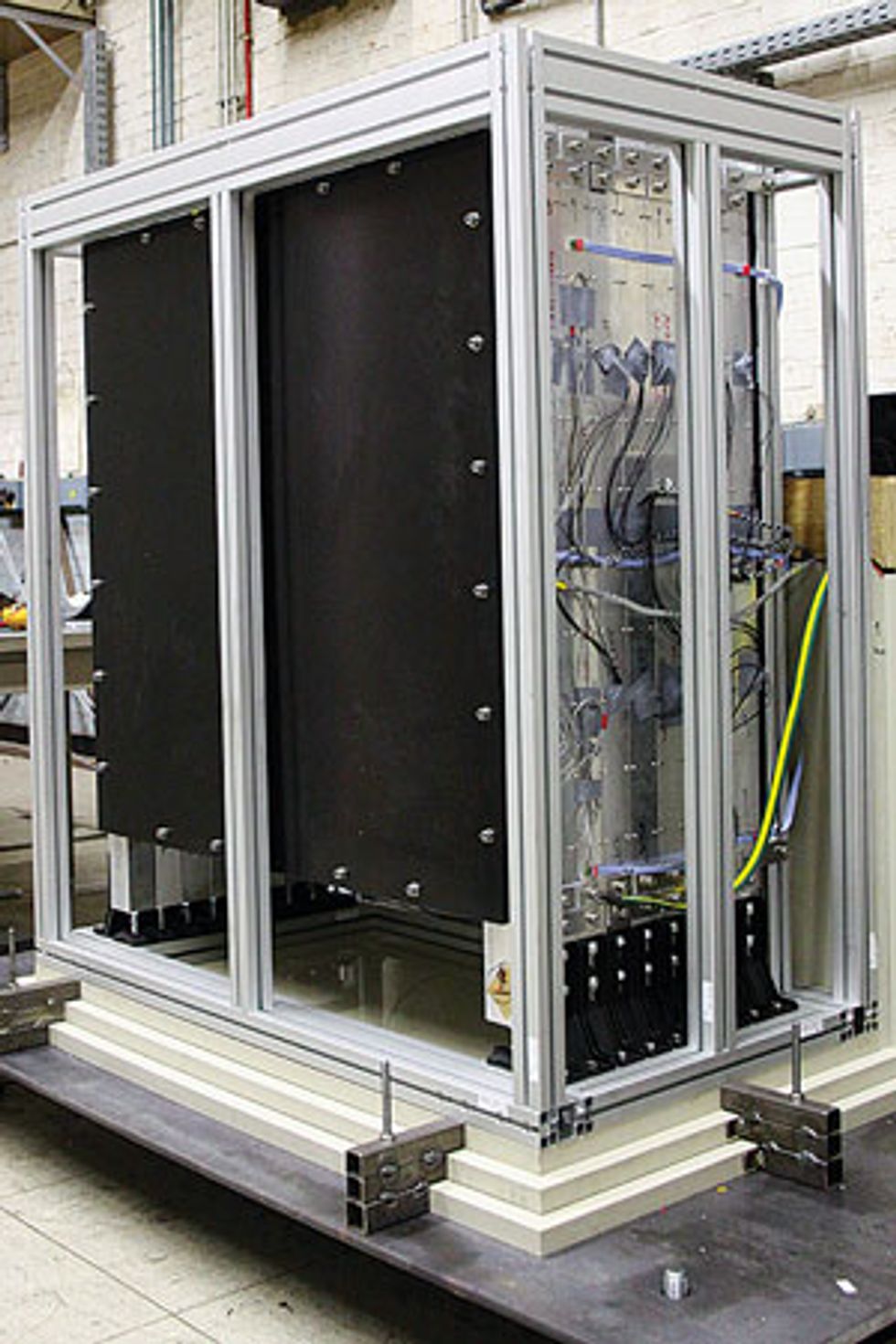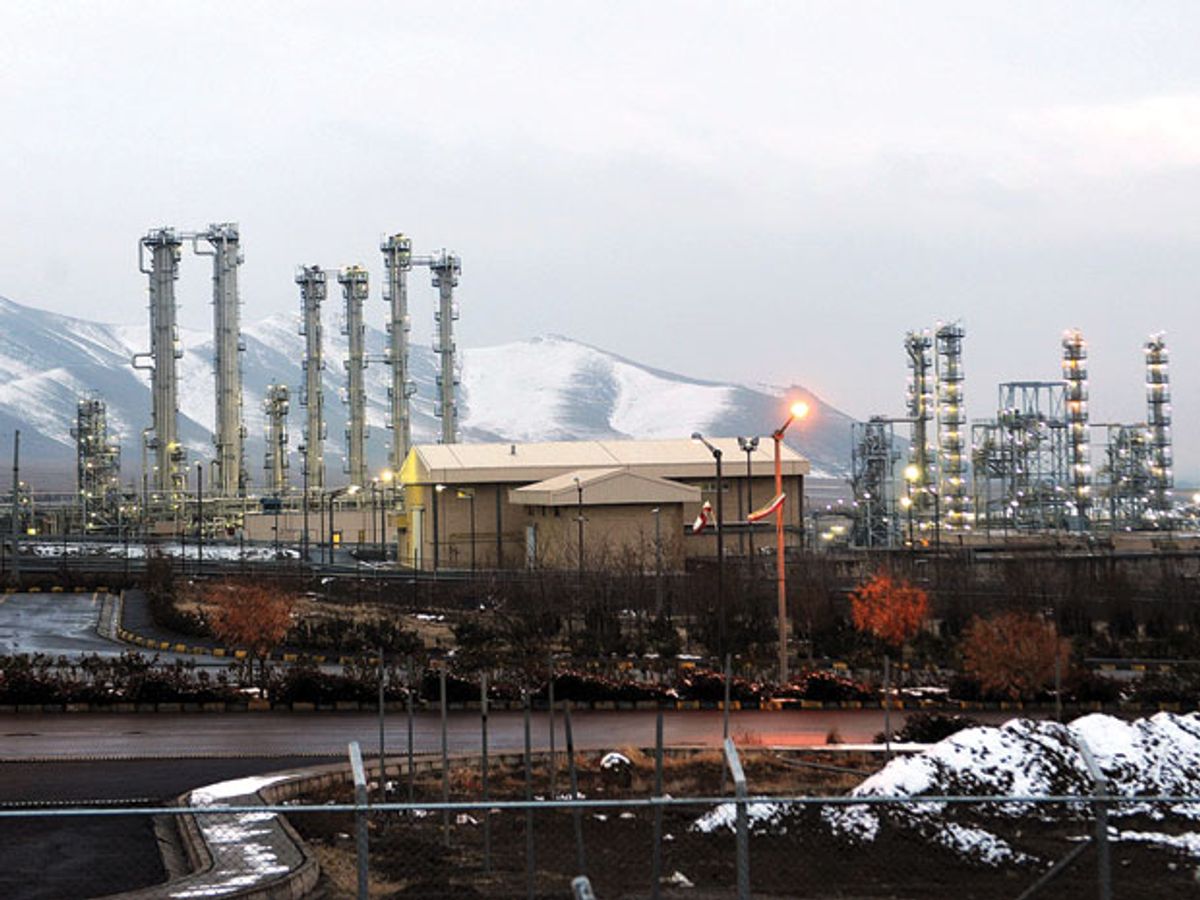Any deal to keep anaspiring nuclear-armed state from acquiring a weapon must be based on verification, not trust, as President Obama has repeatedly asserted. That verification is charged to the International Atomic Energy Agency (IAEA), whose inspectors would visit a country such as Iran to ensure its facilities are in compliance.
Critics of the current deal between Iran and major world powers point to the agency’s limited verification tools. However, several advanced monitoring technologies that could make verification easier and more accurate are in the works. And with 60-plus nuclear power plants under construction around the world and spent-fuel stores piling up, these safeguard technologies might be useful in other places as well.
There’s a real need for them, says Nancy Jo Nicholas, associate director for threat identification and response at Los Alamos National Laboratory (LANL). “There is talk about a global renaissance in the nuclear industry,” she says. “There will be more facilities, so giving inspectors tools that allow them to do their job in an efficient and effective way is a clear benefit.”
For now, the IAEA, based in Vienna, relies on a combination of surveillance cameras, satellite imagery, and site visits. Inspectors conduct a suite of measurements on-site and check when electronic and optical seals placed on fuel containers were last opened. (Newer seals use RF links to send encrypted data to a central data collector, which passes the information on to the IAEA offices.)
But these technologies are not accurate enough and can be fooled. Radiation monitors can be befuddled by signals from natural or legitimate radioactive materials. Seals—of which there are hundreds of types—can be hacked, says Roger Johnston, past head of LANL’s vulnerability assessment team, who cofounded and runs the security consulting firm Right Brain Sekurity. (See “Nearer-Term Nuclear Sensors” below.)
One particular technology promises to make up for these shortcomings: antineutrino detectors. Nuclear reactors are the largest man-made source of antineutrinos—subatomic particles with tiny mass and no electric charge. The number and energy spectrum of antineutrinos boiling out of a reactor indicates reactor power and the precise amount of nuclear isotopes in the core. This means that inspectors could verify if the reactor is running as intended or if uranium has been added or plutonium removed.

The challenge is in detecting the elusive particles: Only one in 100 billion passing through matter interact with it. Today’s detectors capture the particles using gadolinium-spiked water or solvent inside tanks several meters on a side. In the tanks, an antineutrino occasionally collides with protons in the liquid, creating a neutron and a positron. Photodetectors sense light flashes produced when the positron crashes into an electron and when the neutron is captured by the gadolinium.
The large tank of liquid must be put underground to block out cosmic rays that can lead to false positives, and that can be a problem. So a team of British and French researchers has designed a lithium-based solid detector that should be portable and easy to deploy at a reactor. Neutrons don’t travel as far in the solid as they do in a liquid before running into an atom to produce light.
“We can detect positron and neutron events exactly where they happen in a cube as small as 5 by 5 centimeters,” says University of Oxford physicist Antonin Vacheret, who is leading the project. By imaging that small volume, the researchers can precisely measure the distance between the positron and neutron events. This distance is unique for antineutrinos born in a nuclear reactor. The accuracy should allow for a compact detector that doesn’t need to be underground or shielded against cosmic rays, Vacheret says. A 1-metric-ton detector measuring 20 by 80 by 45 cm has recorded data from a Belgian research reactor since August 2014, detecting about 260 antineutrinos per day. Detailed results aren’t public yet, but “what we’re seeing is very encouraging,” Vacheret says. A larger prototype should be installed at a commercial reactor in Virginia by the end of 2015.
Small antineutrino detectors would have to sit within tens of meters of a reactor core to do any good. What nuclear safety agencies could really benefit from is a detector that could monitor reactors and maybe even spot clandestine ones from kilometers away. One proposed project in the United States offered that hope: The WATer CHerenkov Monitor for AntiNeutrinos, or Watchman, a collaboration among several universities and national laboratories.
Watchman would have built on a series of recent experiments at the San Onofre nuclear power plant in California. It was to use 3,500 tons of gadolinium-doped water to monitor a nuclear power station 13 kilometers away. If the technology proved itself, a giant million-ton detector could spot antineutrinos from a reactor 1,000 km away, the project’s masterminds say in their proposal. Such a reactor could potentially be built in a neighboring nation to keep tabs on an uncooperative state.
However, on 28 May, the U.S. Energy Department informed researchers that it would not fund the project. “This was disappointing and somewhat surprising to me personally, given the current importance of nonproliferation detection to our current national interest,” says Bob Svoboda, a University of California, Davis, physicist and co-spokesperson for the project.
Antineutrino detection holds tremendous promise, says Thomas Shea, an independent consultant who has worked as an IAEA inspector. But it’s still at an early stage, and the IAEA will need to see a conclusive demonstration to consider adoption, he says: “The question is how much longer and what it might cost.”
While new technologies are worth developing, “what we lack now is not a magic technology,” says security consultant Johnston. “We don’t do simple, low-tech stuff right.”
In the end, the fate of any monitoring technology depends on the IAEA’s woefully small budget. In 2015, the agency had a budget of just over US $390 million. Around $147 million will go to nuclear verification activities, which includes monitoring more than 1,250 facilities around the world. The agency estimates that monitoring Iran alone costs about $1 million a month.
This article originally appeared in print as “Antineutrinos Could Reveal Rogue Nuclear Programs.”
Nearer-Term Nuclear Sensors
Other nuclear monitoring technologies could be more practical than antineutrino detectors in the near term, at least for improving the effectiveness of site visits by inspectors. One technique being tested at Los Alamos National Laboratory (LANL) is laser-induced breakdown spectroscopy. LIBS involves zapping a surface with short laser pulses to create high-temperature plasma. Excited atoms and ions in the plasma emit characteristic frequencies that reveal the composition and concentration of elements. The technique works in minutes and is used by the Curiosity Rover to probe Martian rocks. LANL researchers have developed a backpack-totable LIBS system, which International Atomic Energy Agency inspectors could use to quickly spot radioactive traces on-site instead of taking swabs back to a lab. The IAEA is testing this and a similar device developed by the Canadian Safeguards Support Program [PDF].
LANL is also developing microcalorimeter detectors that could make gamma-ray measurements 10 times as accurate as they are now. Today’s germanium-based gamma detectors are not sensitive enough to separate spikes from different radionuclides in the energy spectrum. In a microcalorimeter, a tin absorber cooled to a few tenths of a degree above absolute zero converts gamma-ray energy to heat. The tiny temperature rise is a precise measure of gamma energy.
